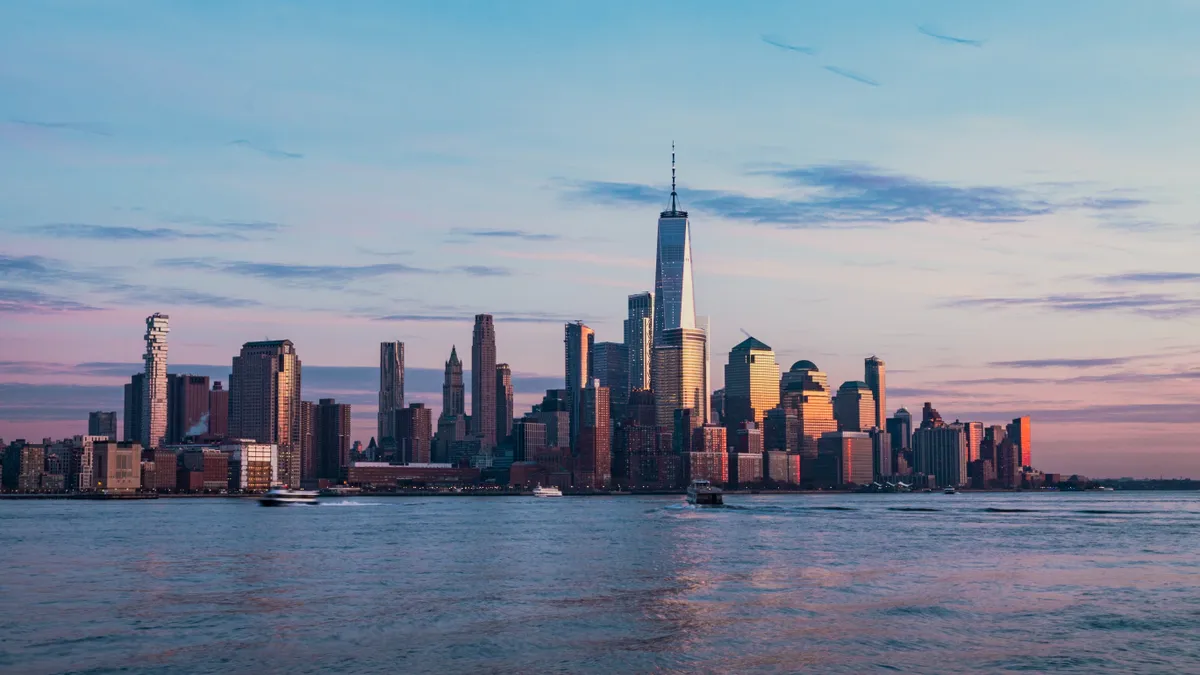Dive Brief:
-
The amount of empty retail space in New York City has doubled in the last decade or so, as the citywide vacancy rate soared by almost 50%, according to a comprehensive report released Wednesday by City Comptroller Scott Stringer. The vacancy rate rose from 4% in 2007 to a high of 5.8% in 2017, according to the report. That year, there was an extra 5.2 million square feet of vacant retail space compared to 2007, rising to over 11 million square feet.
-
The sweeping analysis of 24 neighborhoods shows that vacancy has expanded across all five boroughs, according to the report. While certain swaths of Manhattan have some of the worst vacancies, the highest vacancy neighborhoods aren’t found there, with Staten Island and Queens particularly hard hit, and some neighborhoods suffering vacancy rates of up to 25%.
-
Stringer identifies e-commerce (what he calls "the Amazon effect") as a major contributor to the devastation, but also calls out skyrocketing rents, along with property tax hikes, and "regulatory hurdles." Over the past decade, average retail rents rose 22% citywide, especially in parts of Manhattan — with spikes as high as 68% on the Upper West Side, and 55% in Central Harlem.
Dive Insight:
The dramatic downfall of retail in New York City is especially stark considering how it has tracked alongside an economic recovery, albeit one that hasn't been kind to the small, independent retail establishments that give the place so much of its character.
"Change is the one constant in New York City – and sometimes, change can be overwhelming," Stringer said in a statement. "Even as our economy has grown, many mom-and-pop stores have been left behind, transforming spaces once owned by local small businesses into barren storefronts. This isn’t just about empty buildings and neighborhood blight, it’s about the affordability crisis in our city. We need to use every tool in the box to tackle affordability, support small businesses and ensure New Yorkers are equipped to succeed in the new economic reality."
Those tools include tax incentives for "independent merchandise retailers in high-vacancy retail corridors"; a smoother regulatory process including waivers of permitting and inspection fees for retailers that take over long-empty space; and more coordinated neighborhood planning "to ensure that the right amounts and types of retail space are incorporated into the planning process," according to a press release from the comptroller's office.
The Fix SoHo/NoHo Coalition, a group of residents, owners, workers and businesses in that area of lower Manhattan, embraced the report and its recommendations, but added that SoHo in particular, still deemed a manufacturing district, is long overdue for rezoning. "The coalition believes that the absurd zoning laws threaten SoHo’s vitality and will continue to drive away restaurants and businesses," the group stated in an email to Retail Dive.
In some cases, retail store space has been taken over by "service-oriented establishments such as restaurants, barbers, and exercise studios," Stringer also said.
That's an example of how the city's retail establishments should be viewed, as businesses that fall into three or four broad categories — those service retailers, local mom-and-pops, commodity retailers (most likely to be hurt by e-commerce) and specialty/high end retailers, according to retail analyst Nick Egelanian, president of retail development firm SiteWorks. While Stringer calls out the pressures of e-commerce as a significant driver of the retail vacancy problem, that could be over-stated, Egelanian warned.
E-commerce is a particular challenge for retailers offering commodities easily found online, where shopping is geared to low prices and convenience rather than discovery and experience, but there aren't all that many such retailers in many parts of New York, compared to other parts of the U.S., he noted. Then again, Amazon could have an outsize effect in the area, considering that its Prime members tend to be wealthier consumers living in urban areas, he said.
For high street retail like the stores found in the city's shopping districts, there are several reasons beyond e-commerce for challenged sales, like new attitudes toward fashion, for example.
"The data on vacancy is clearly accurate, but the explanation behind the report is more complicated," Egelanian said in an interview. "There are probably 10 factors behind all this. It’s just not a straight line to the conclusion that all the small businesses and the high street is harmed by the internet."















